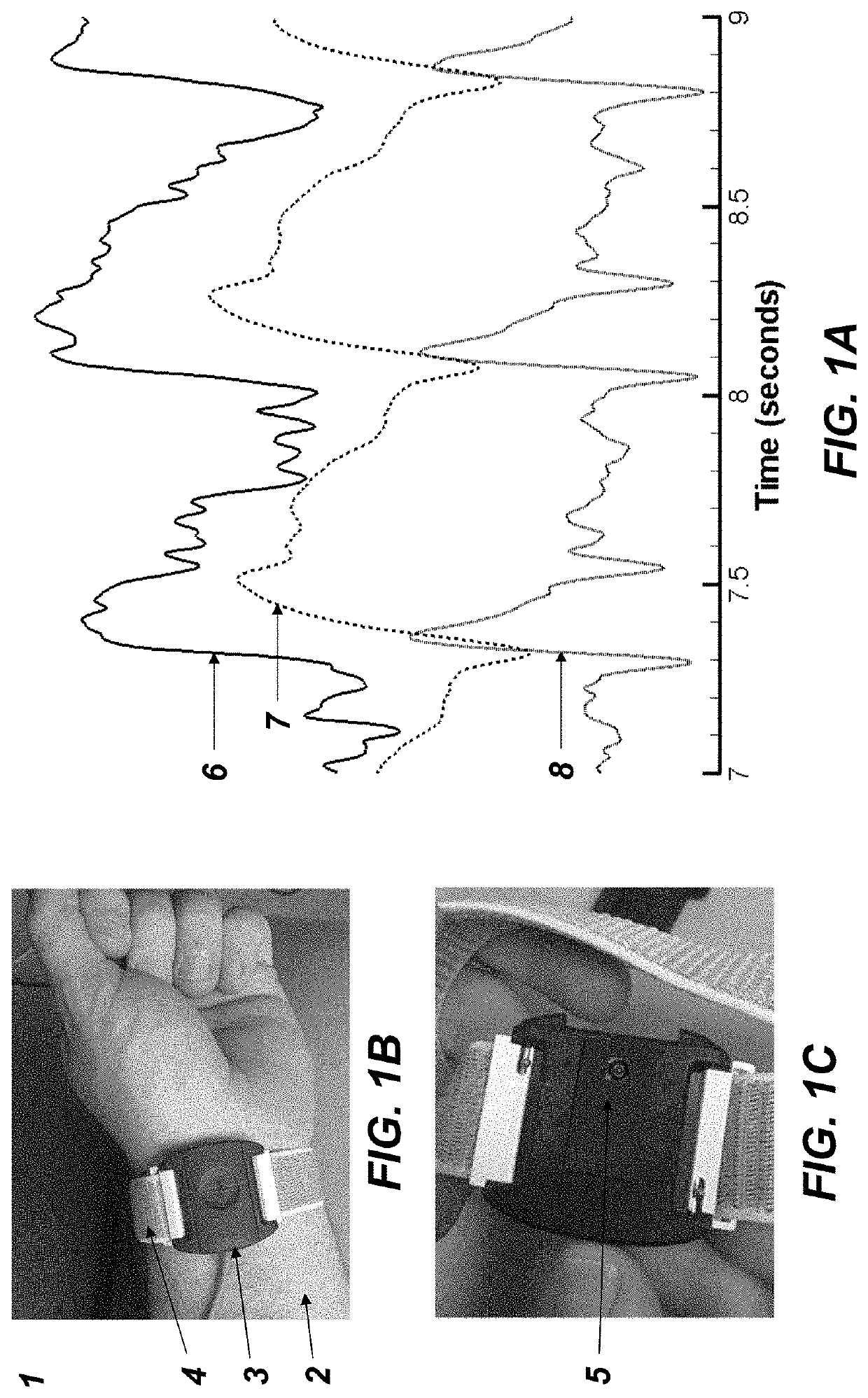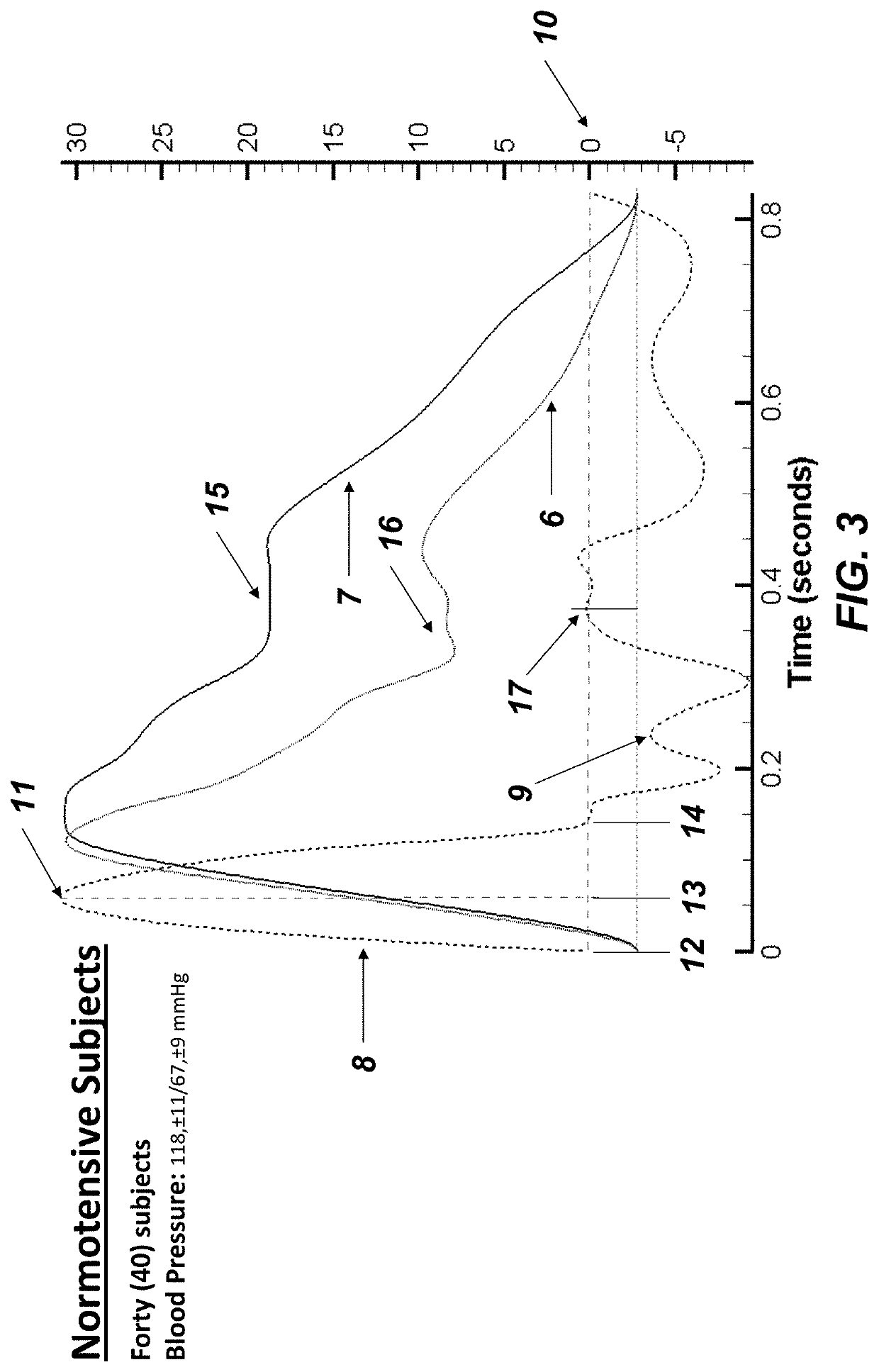Method to Quantify the Hemodynamic and Vascular Properties in Vivo from Arterial Waveform Measurements
a waveform measurement and hemodynamic technology, applied in the field of quantitative of the hemodynamic parameters and the hypertension status of living subjects, can solve the problems of ischemic heart disease, changes in the mechanical properties of arterial vascular vessels, and the effectiveness of specific drugs is basically trial and error
- Summary
- Abstract
- Description
- Claims
- Application Information
AI Technical Summary
Benefits of technology
Problems solved by technology
Method used
Image
Examples
Embodiment Construction
[0033]Disclosed herein is an in vivo, non-invasive method and apparatus for the measurement hemodynamic parameters and mechanical anelastic in vivo properties of the arterial blood vessels in a subject. The current standard method of measuring a patient's blood pressure is by a cuff over the upper arm, and the entire arm is occluded, which can be distressing to many patients especially if their blood pressures are elevated. The apparatus and methods disclosed herein are a significant improvement over current practice, since it determines the patient's blood pressure and other hemodynamic properties by a simple occlusion and release of an artery over no more than a five (5) second period. From the measured systolic and diastolic blood pressures, the non-linear anelastic material properties of peripheral arterial blood vessels can be determined from pulse pressure and pulse volume waveform measurements, and from these waveforms, the hypertensive state, hypertrophy and mechanical anela...
PUM
 Login to View More
Login to View More Abstract
Description
Claims
Application Information
 Login to View More
Login to View More - R&D
- Intellectual Property
- Life Sciences
- Materials
- Tech Scout
- Unparalleled Data Quality
- Higher Quality Content
- 60% Fewer Hallucinations
Browse by: Latest US Patents, China's latest patents, Technical Efficacy Thesaurus, Application Domain, Technology Topic, Popular Technical Reports.
© 2025 PatSnap. All rights reserved.Legal|Privacy policy|Modern Slavery Act Transparency Statement|Sitemap|About US| Contact US: help@patsnap.com



